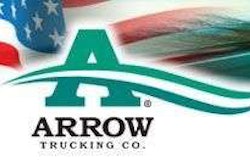Full Deck
While its reefer fleet leads the way, Western Distributing Transportation also operates armored car, auto transport and towing and recovery businesses
What do lettuce, financial securities and expensive cars have in common? They are among the products moved around the United States by the various truck line operations of Western Distributing Transportation Corp.
Since Western, one of the original Coors beer distributors in 1933 after the end of prohibition, launched its trucking operations in 1977, the Denver-based company has diversified in a big way. Within the $38 million trucking business, the family-owned company has reefer, armored truck, auto transport and towing and recovery divisions. Up until a couple of years ago, it also ran a flatbed division but sold the trailers ahead of the economic downturn. It also closed a California terminal.
Western’s trucking operation is different today in another way. “One of the things we do a little different from other truck lines is that our shop is a separate company with its own profit center,” says Dino Guadagni, vice president of trucking operations and a member of Western’s founding family.
The company runs 193 power units, about 85 percent sleepers.
For years Western has been a loyal Peterbilt customer — the trucking company’s first six units were Petes. Guadagni likes the brand’s quality and the high return at resale. Though he says he’s technology conscious, the company largely eschews aerodynamic models in favor of Pete’s long-hooded Model 389. “We go after the ex-owner-operators and drivers who’ve been in the industry a long time,” he says. “They prefer the long-hood models. Our resale market on the back end also seems to want those models.”
Western relies mostly on those former owner-operators for their company drivers — only about nine owner-operators are leased to the company. The average driver has 18 years’ experience and the knowhow of what it costs to run a truck. “We tend to go with guys with a lot of experience because our operations involve such sensitive cargo,” he says. “We run a lot of perishables, which require monitoring the temperatures, and our armored operation involves high security. Our business is very hands-on and communication-involved.”
Western’s driver compensation program changed a few years ago. The company was running a lower per-mile rate supplemented with performance-graded bonuses that boosted the overall compensation. Problem was, potential drivers only looked at the mileage rates, which were lower than competitors, Guadagni recalls. The company dropped the bonuses and increased the per-mile rates.
Solo driver rates now range from 30 cents a mile for less than a year with Western up to 36.5 cents a mile for drivers with 15 years. Teams start at 19 cents a mile per driver for less than a year with the company up to 23 cents a mile for eight years or more. Drivers are assigned their own tractor — with their name on the door after three years — and can help choose options on a new purchase.
“People say it still looks low, but [our drivers get more] miles,” Guadagni says. “Our guys are getting 2,900 to 3,200 miles a week. We pay for multiple stops and all miles.”








